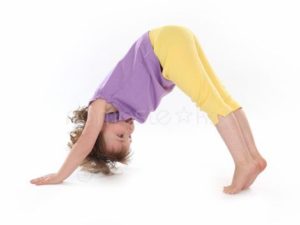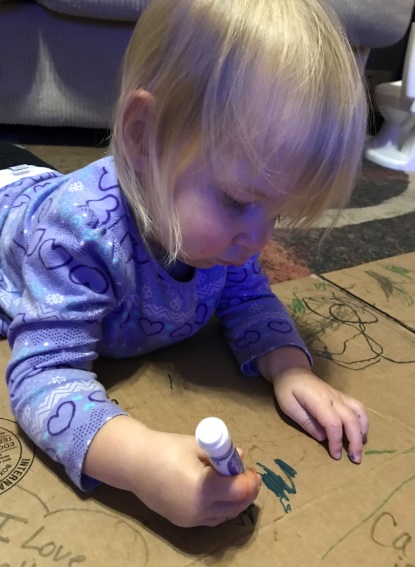Upper Body Weight Bearing
By Jessica Tallent, OTR/L
Kids Place Pediatric Occupational Therapist
O ccupational therapists assist in developing fine motor coordination and grasping skills needed for children to carry out everyday tasks. These tasks include playing with different sized, picking up pieces of food, learning to use utensils such as spoons and markers, tying shoes, completing buttons, and so much more.
ccupational therapists assist in developing fine motor coordination and grasping skills needed for children to carry out everyday tasks. These tasks include playing with different sized, picking up pieces of food, learning to use utensils such as spoons and markers, tying shoes, completing buttons, and so much more.
An inefficient or weak grasp pattern can affect how we are able to participate in our world. Before we can even begin to develop and refine our fine motor and grasping skills, we must first have what we call proximal stability.
Proximal stability means have strong, stable muscles and joints in and close to our core, especially at the shoulders. One of the best ways to achieve proximal stability is through weight bearing activities.
Occupational therapists focus on weight bearing through the upper extremities. This allows us to activate our core muscles, strengthen our shoulder girdle, and improve stability. When weight bearing through outstretched hands, we are also able to better develop our hand arches and integrate palmar and grasping reflexes.
We often hear about tummy time as babies, and the importance of creeping/crawling for core and upper extremity development, but tummy time does not have to stop when babies learn to walk. Floor time can and should continue throughout childhood to continue building that proximal stability.
Ways to work on more weight bearing activities at home:

- Play on your belly – coloring, puzzles, reading are examples that can all be done lying on
your belly - Creeping/crawling on hands and knees – make a relay or have a race, crawl beside each other or follow the leader
- Yoga – down dog, cat/cow, cobra, bridge
- Animal walks – bear crawls, crab walks, army/belly crawls
- Wheelbarrow walks
- Wall push-ups/floor push-ups
- Planks







